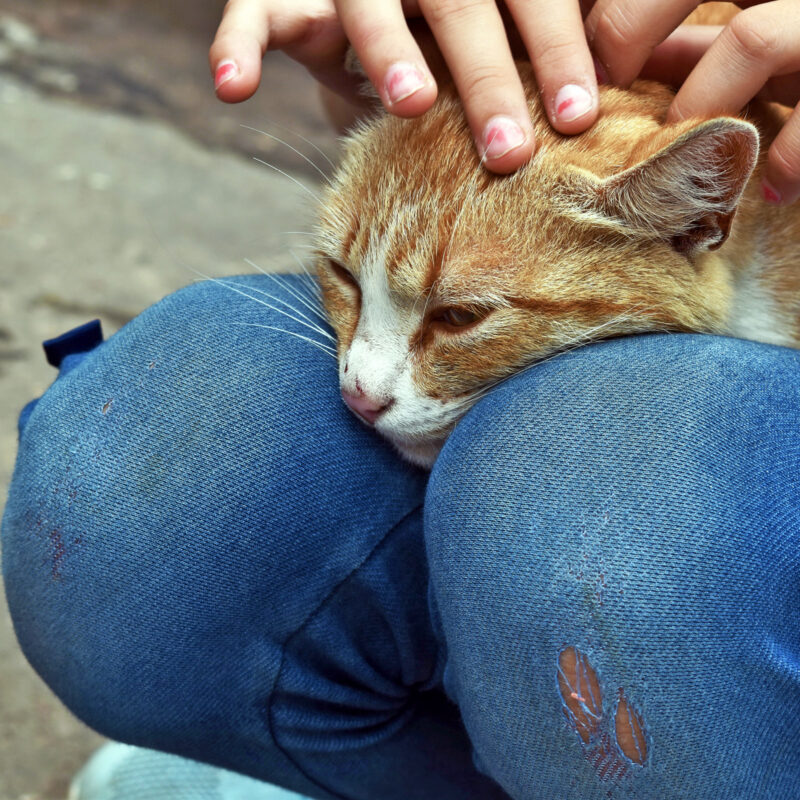
The Surprising Language of Community Cats with Sarah Brown, Cat Behavior Consultant and Author of “The Hidden Language of Cats: How They Have Us at Meow”
February 20, 2024
Tech That Plays Fetch with Chris Roy, Founder of Doobert.com
February 27, 2024
What do you do when it seems you are the only person willing to help community cats in your neighborhood?
Maybe you helped trap a few cats in your backyard, your neighbor saw you doing this, and now you are the cat rescuer in town? I think we can all say we have sometimes felt that people are asking too much of us. Do you ever wonder why this happens?
Human behavior is such that if we see an option to defer (do nothing), we will lean that way. Programs, like Return to Field, have given us permission to know less about the cats in our communities vs more. In reality Return to Field really gave shelters permission to stop euthanizing cats that really shouldn’t enter the “shelter space” in the first place.
If you are an individual that is doing this by yourself here are some tips I would like to share with you. Below is a representation of what I would do if I were all alone helping cats in the community:
- Know your limits and define them. I am not a fan of trapping (it’s hard work!) – so, I would focus my efforts on fundraising for spay/neuter of owned cats in the lowest-income area near me. This could be the area that I get the most calls from. Or the lowest-income community near me. Let your community do the work if you are willing to help with subsidizing the funds for spay/neuter.
 Reach out to all of the veterinarians in your community (3-5) and introduce yourself as a cat advocate and someone who would like to set up an assistance account where donations can be directed to support cats in need in the community. This isn’t a 501(c)(3), it is just an account managed by the vet practice that you can send donations to. Build and track the balance – create a budget (some for s/n and some for emergency vet care).
Reach out to all of the veterinarians in your community (3-5) and introduce yourself as a cat advocate and someone who would like to set up an assistance account where donations can be directed to support cats in need in the community. This isn’t a 501(c)(3), it is just an account managed by the vet practice that you can send donations to. Build and track the balance – create a budget (some for s/n and some for emergency vet care).- Reach out to the churches and food banks in the area to introduce yourself and see if there are any shared resources/opportunities there. Churches may help with cat food drives, distribution events, and volunteers.
- Develop your organizational skills and build a resource bank so you can easily share information within the community periodically. Share free resources about how to identify a lost cat, how to trap cats, how to tame feral cats, and how to find access to low-cost spay/neuter on social media, with your local health department, animal control, and local cable stations. Network like crazy as you might find opportunities that haven’t been used. There are often programs that have funding that isn’t used because the coordination isn’t there. If you are active and a Facebook group doesn’t exist you can create a local community cat Facebook page (it is most likely that something like this is already in place, join and participate in it). I highly recommend getting to know Google Docs to help organize your local resource bank. You can create a view-only resource page that you can share with others easily. This is part of the trend of normalizing TNR.
- Fundraising. There are a lot of community groups that help put together resource drives. You can also do fundraisers that don’t require non-profit status, like donation cans. This is an area where you need to think about grass-roots fundraising tactics (i.e., bake sales, yard sales, plant sales, etc.). Churches and Girl Scouts may be able to help out here.
Think of yourself as a community cat resource air traffic controller. Use the services that already exist in your community to help blend in for community cat support. The best thing you can do is not be shy. Don’t worry if folks say they aren’t interested. That is ok. They will call you when they need you.
You can be a strong Community Cat Advocate in your town and turn that passion for cats into action!
Are you working hard to help cats on your own? You’re not alone! Connect with like-minded cat rescuers, TNR champions, and feline welfare advocates on our Facebook page, or find resources to help community cats on our resources page.




